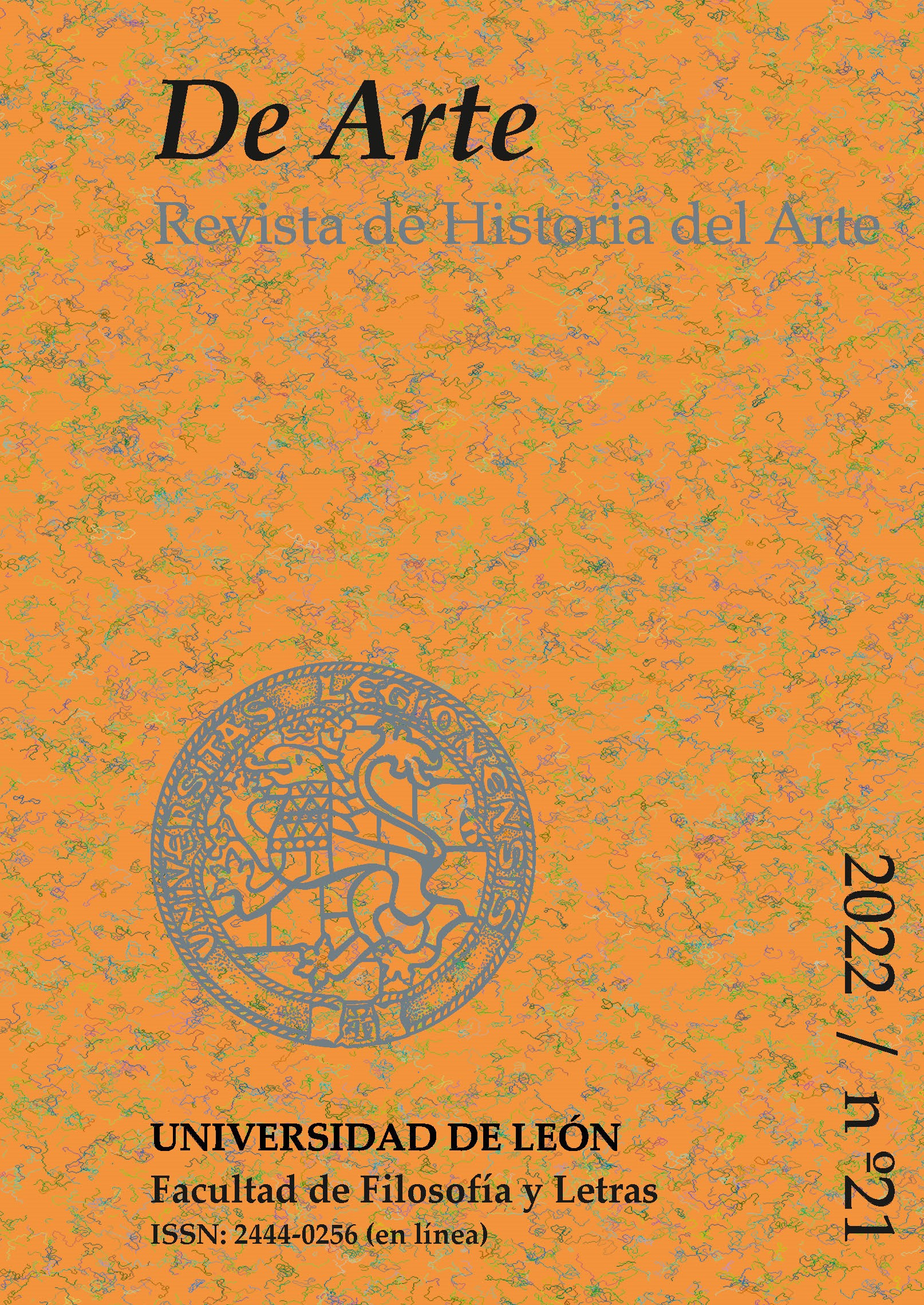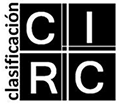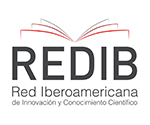The Historicization of the Work by Women Artists through Exhibitions: the Case of the Body Tendency of the Nineties in the Basque Context
DOI:
https://doi.org/10.18002/da.i21.7272Keywords:
women artists, exhibitions, historiography, the nineties, Basque Country.Agencies:
Universidad del País Vasco UPV/EHU y Agencia Estatal de InvestigaciónAbstract
In the 1990s, artistic creations around bodies by female artists proliferated. Considering the historiographic capacity of the exhibitions, we analyse the way in which these authors are being treated in the Basque context. We begin by presenting the novelties of the pioneering case of Feminist Genealogies in Spanish Art: 1960-2010 of the MUSAC in León (2012-2013), in which the trend in question was mentioned. Next, we examine the treatment received in the catalogues of four exhibitions held at the CAV. On the one hand, we study the main exhibition of women artists of the 1990s, El puñalito y un puñao (1996); on the other hand, three samples of the recently begun decade of the twenties: Bigarren bidea. Zeru bat hamaika bide (2021-), Womanology. José Ramón Prieto Collection (2021) and Baginen Bagara. Women artists: Logics of (in)visibility (2021-2022).
Downloads
Métricas alternativas
References
Andrieu, Rosa. “s/t”. En El puñalito y un puñao, coordinado por Adelina Moya, s. pag. Bilbao: Centro de Documentación y Estudios de la Mujer, 1996.
Ansa, Garazi “Gorputzetik gorputzera. Artxiboak erakusketa aretoetan”. Tesis doctoral, Universidad del País Vasco, 2020. https://addi.ehu.es/handle/10810/51654?show=full
Ansa, Garazi y Haizea Barcenilla. Baginen bagara. Artistas mujeres: lógicas de la (in)visibilidad. Colecciones del Museo San Telmo y de la Diputación Foral de Gipuzkoa. San Sebastián: Museo San Telmo, 2021.
Ansa, Garazi y Haizea Barcenilla. “Baginen bagara”. En Baginen bagara. Artistas mujeres: lógicas de la (in)visibilidad. Colecciones del Museo San Telmo y de la Diputación Foral de Gipuzkoa, 9-29. San Sebastián: Museo San Telmo, 2021.
Artium a. https://artium.eus/es/centro-de-documentacion-de-artistas-vascas
Artium b. https://catalogo.artium.eus/exposiciones/zeru-bat-hamaika-bide-0
Artium c. https://www.artium.eus/images/Exposiciones/2020/Zeru-bat-liburuxka-folleto.pdf
Artium d. https://www.artium.eus/images/Exposiciones/2021/Bigarren-bidea-Liburuxka-Folleto-Leaflet.pdf
Artnews. https://www.artnews.com/artnews/retrospective/why-have-therebeen-no-great-women-artists-4201/
Barcenilla, Haizea. “Incluir o replantear: cómo exponer e historizar a las mujeres artistas”. Boletín de arte, nº 35 (2014), 117-129.
Barcenilla, Haizea. “Manology”. Berria, 11 de mayo de 2021. https://www.berria.eus/paperekoa/1880/033/002/2021-05-11/manology.htm
Carpenter, Ele. “s/t”. En What does the word curate mean to you?, editado por Craig Ashley y Trevor Pitt, 11. Birmingham: MAC Birmingham, 2013.
Carro Fernández, Susana. “Una historia propia”. En Mujeres de ojos rojos. Del arte feminista al arte femenino, 132-141, Gijón: Ediciones Trea, 2010.
Castañer, Xesqui, “Iconografía de la mujer en los pintores vascos (siglos XIX y XX)". Kobie: Bellas artes, nº2 (1984), 95-120.
Esteban, Mari Luz. Antropología del cuerpo: género, itinerarios corporales, identidad y cambio. Barcelona: Bellaterra, 2013.
Lekuona, Ane. “Baginen Bagara. Artistas mujeres: lógicas de la (in)visibilidad”. Arte, individuo y sociedad, nº34 (2022), 835-836. https://dx.doi.org/10.5209/aris.79863
Mayayo, Patricia. “Imaginando nuevas genealogías. Una mirada feminista a la
historiografía del arte español contemporáneo”. En Genealogías feministas en el arte español: 1960-2010, editado por Juan Vicente Aliaga y Patricia Mayayo, 19-38. Madrid: This side up, 2013.
Méndez, Lourdes. Os labirintos do corpo: manipulaciòns ideolóxicas, saberes científicos e obras de arte. Vigo: A Nosa Terra, 1998.
Méndez, Lourdes. “Arte coño y otras representaciones del cuerpo sexuado: feminismos en el arte contemporáneo”. En Cuerpo y Cultura, editado por Javier Eloy Martínez Guirao y Anastasia Téllez Infante, Barcelona: Icaria, 2010.
Molina, Ángela. “Maisons Vides”. En Womanology: colección José Ramón Prieto,129-139. Bilbao: Museo de Bellas Artes de Bilbao, 2021.
Moya, Adelina, coord. El puñalito y un puñao. Bilbao: Centro de Documentación y Estudios de la Mujer, 1996.
Museo Bellas Artes de Bilbao. https://museobilbao.com/exposiciones/ikuspuntuak/
Olaizola, Ana. “La paradoja de lo femenino en el arte”. En El puñalito y un puñao, coordinado por Adelina Moya, s. pág. Bilbao: Centro de Documentacióm y Estudios de la Mujer, 1996.
Onandia, Mikel. “Cronología. 1968-2018”. En Después del 68. Arte y prácticas artísticas en el País Vasco. 1968-2018, 285-507. Bilbao: Museo Bellas Artes de Bilbao, 2018.
Schor, Mira. “Patrilineage”. En Feminist Art Theory: An Anthology 1968-2014, editado por Hilary Robinson, 159-164. Chichester, West Sussex: Wiley Blackwell, 2015.
Valle, Teresa del. “La mujer vasca a través del análisis del espacio: utilización y significado”. Lurralde: Investigación y espacio, nº 6 (1983), 251-270.
Valle, Teresa del. Mujer vasca: imagen y realidad. Barcelona: Anthropos, 1985.
Villa, Rocío de la. “En torno a la generación de los noventa” Genealogías feministas en el arte español: 1960-2010, editado por Juan Vicente Aliaga y Patricia Mayayo, 246-256. Madrid: This side up, 2013.
Zugaza, Miguel. “Tejer”. En Womanology: colección José Ramón Prieto. 99-101. Bilbao: Museo de Bellas Arte de Bilbao, 2021.
Downloads
Published
Issue
Section
License
Copyright (c) 2022 Maite Luengo Aguirre

This work is licensed under a Creative Commons Attribution-NonCommercial-ShareAlike 4.0 International License.
Los autores que publican en esta revista están de acuerdo con los siguientes términos:
- Los autores ceden de forma no exclusiva los derechos de explotación (reproducción, distribución, comunicación pública, transformación) a la Universidad de León, por lo que pueden establecer, por separado, acuerdos adicionales para la distribución no exclusiva de la versión de la obra publicada en la revista (por ejemplo, alojarlo en un repositorio institucional o publicarlo en un libro), con un reconocimiento de su publicación inicial en esta revista.
- Este trabajo se encuentra bajo la Creative Commons Attribution-NonCommercial-ShareAlike 4.0 International License. Puede consultarse desde aquí la versión informativa y el texto legal de la licencia.
- Se permite y se anima a los autores a difundir electrónicamente las versiones pre-print (versión antes de ser evaluada) y/o post-print (versión evaluada y aceptada para su publicación) de sus obras antes de su publicación, ya que favorece su circulación y difusión más temprana y con ello un posible aumento en su citación y alcance entre la comunidad académica.









